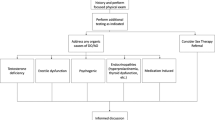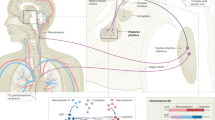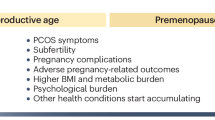Abstract
Neurogenic erectile dysfunction is a highly prevalent complication in men undergoing radical prostatectomy. The underlying mechanisms remain incompletely defined and the effective therapy has been limited. This study aimed to evaluate the protective effect of riluzole and the role of PKC β and excitatory amino acid transporters (EAATs) mediating this effect in a rat model of bilateral cavernous injury (BCNI). A total of 48 male Sprague-Dawley rats were divided into sham, BCNI (at 7, 15 days post-injury) and BCNI treated with riluzole (8 mg/kg/day) groups. Erectile function was measured as maximum intracavernosal pressure (mICP)/mean arterial pressure (MAP) and total ICP/MAP. Changes in protein expressions of phospho (p)-PKC β IIser660 and EAATs were analysed in penis and major pelvic ganglion with western blotting. BCNI decreased erectile function at 7 and 15 days post-injury (mICP/MAP at 4 V: 0.45 ± 0.06 vs 0.84 ± 0.07; 0.34 ± 0.04 vs 0.77 ± 0.04 respectively; p < 0.001) whereas riluzole treatment (for 15 days) preserved erectile function (mICP/MAP at 4 V: 0.62 ± 0.03 vs 0.34 ± 0.04; p < 0.01). The decline in the expression of p-PKC β IIser660 was observed in penis at 7 and 15 days post-injury (p = 0.0003, p = 0.0033), which was prevented by riluzole treatment for 15 days (p = 0.0464). While expressions of EAAT-1 and EAAT-2 decreased in major pelvic ganglion following BCNI (p = 0.0428, p = 0.002), riluzole treatment for 15 days prevented the decrease only in EAAT-2 expression (p = 0.0456). Riluzole improved erectile function via possibly interacting with PKC β II and glutamatergic pathways, as a potential therapeutic candidate for erectile dysfunction.
This is a preview of subscription content, access via your institution
Access options
Subscribe to this journal
Receive 8 print issues and online access
$259.00 per year
only $32.38 per issue
Buy this article
- Purchase on Springer Link
- Instant access to full article PDF
Prices may be subject to local taxes which are calculated during checkout






Similar content being viewed by others
Data availability
The data that support the findings of this study are available from the corresponding author upon reasonable request.
References
Bratu O, Oprea I, Marcu D, Spinu D, Niculae A, Geavlete B, et al. Erectile dysfunction post-radical prostatectomy—a challenge for both patient and physician. J Med Life. 2017;10:13–8.
Burnett AL, Aus G, Canby-Hagino ED, Cookson MS, D’Amico AV, Dmochowski RR, et al. Erectile function outcome reporting after clinically localized prostate cancer treatment. J Urol. 2007;178:597–601.
Milenkovic U, Campbell J, Roussel E, Albersen M. An update on emerging drugs for the treatment of erectile dysfunction. Expert Opin Emerg Drugs. 2018;23:319–30.
Albersen M, Kendirci M, Van der Aa F, Hellstrom WJ, Lue TF, Spees JL. Multipotent stromal cell therapy for cavernous nerve injury-induced erectile dysfunction. J Sex Med. 2012;9:385–403.
Bannowsky A, Schulze H, van der Horst C, Hautmann S, Jünemann KP. Recovery of erectile function after nerve-sparing radical prostatectomy: improvement with nightly low-dose sildenafil. BJU Int. 2008;101:1279–83.
Ryu JK, Suh JK, Burnett AL. Research in pharmacotherapy for erectile dysfunction. Transl Androl Urol. 2017;6:207–15.
Campbell JD, Burnett AL. Neuroprotective and nerve regenerative approaches for treatment of erectile dysfunction after cavernous nerve injury. Int J Mol Sci. 2017;18:1794.
Mizoule J, Meldrum B, Mazadier M, Croucher M, Ollat C, Uzan A, et al. 2-Amino-6-trifluoromethoxy benzothiazole, a possible antagonist of excitatory amino acid neurotransmission—I. Anticonvulsant properties. Neuropharmacology. 1985;24:767–73.
Gourley SL, Espitia JW, Sanacora G, Taylor JR. Antidepressant-like properties of oral riluzole and utility of incentive disengagement models of depression in mice. Psychopharmacology (Berl). 2012;219:805–14.
Sugiyama A, Saitoh A, Iwai T, Takahashi K, Yamada M, Sasaki-Hamada S, et al. Riluzole produces distinct anxiolytic-like effects in rats without the adverse effects associated with benzodiazepines. Neuropharmacology. 2012;62:2489–98.
Bausch AR, Roy G. Volume-sensitive chloride channels blocked by neuroprotective drugs in human glial cells (U-138MG). Glia. 1996;18:73–7.
Huang CS, Song JH, Nagata K, Yeh JZ, Narahashi T. Effects of the neuroprotective agent riluzole on the high voltage-activated calcium channels of rat dorsal root ganglion neurons. J Pharmacol. Exp Ther. 1997;282:1280–90.
Zarate CA, Manji HK. Riluzole in psychiatry: a systematic review of the literature. Expert Opin Drug Metab Toxicol. 2008;4:1223–34.
Fumagalli E, Funicello M, Rauen T, Gobbi M, Mennini T. Riluzole enhances the activity of glutamate transporters GLAST, GLT1 and EAAC1. Eur J Pharmacol. 2008;578:171–6.
Yoo MH, Hyun H-J, Koh J-Y, Yoon YH. Riluzole inhibits VEGF-induced endothelial cell proliferation in vitro and hyperoxia-induced abnormal vessel formation in vivo. Invest Ophthalmol Vis Sci. 2005;46:4780–7.
Noh KM, Hwang JY, Shin HC, Koh JY. A novel neuroprotective mechanism of riluzole: direct inhibition of protein kinase C. Neurobiol Dis. 2000;7:375–83.
Miletic V, Bowen KK, Miletic G. Loose ligation of the rat sciatic nerve is accompanied by changes in the subcellular content of protein kinase C beta II and gamma in the spinal dorsal horn. Neurosci Lett. 2000;288:199–202.
Ganel R, Crosson CE. Modulation of human glutamate transporter activity by phorbol ester. J Neurochem. 1998;70:993–1000.
Casado M, Zafra F, Aragón C, Giménez C. Activation of high-affinity uptake of glutamate by phorbol esters in primary glial cell cultures. J Neurochem. 1991;57:1185–90.
Kalandadze A, Wu Y, Robinson MB. Protein kinase C activation decreases cell surface expression of the GLT-1 subtype of glutamate transporter. Requirement of a carboxyl-terminal domain and partial dependence on serine 486. J Biol Chem. 2002;277:45741–50.
González MI, Robinson MB. Protein kinase C-dependent remodeling of glutamate transporter function. Mol Interv. 2004;4:48–58.
Wu Y, Satkunendrarajah K, Teng Y, Chow DSL, Buttigieg J, Fehlings MG. Delayed post-injury administration of riluzole is neuroprotective in a preclinical rodent model of cervical spinal cord injury. J Neurotrauma. 2013;30:441–52.
Coderre TJ, Kumar N, Lefebvre CD, Yu JSC. A comparison of the glutamate release inhibition and anti-allodynic effects of gabapentin, lamotrigine, and riluzole in a model of neuropathic pain. J Neurochem. 2007;100:1289–99.
Canguven O, Burnett A. Cavernous nerve injury using rodent animal models. J Sex Med. 2008;5:1776–85.
Sezen SF, Hoke A, Burnett AL, Snyder SH. Immunophilin ligand FK506 is neuroprotective for penile innervation. Nat Med. 2001;7:1073–4.
Chew DJ, Carlstedt T, Shortland PJ. The effects of minocycline or riluzole treatment on spinal root avulsion-induced pain in adult rats. J Pain. 2014;15:664–75.
Canguven O, Lagoda G, Sezen SF, Burnett AL. Losartan preserves erectile function after bilateral cavernous nerve injury via antifibrotic mechanisms in male rats. J Urol. 2009;181:2816–22.
Musicki B, Bhunia AK, Karakus S, Burnett AL. S-nitrosylation of NOS pathway mediators in the penis contributes to cavernous nerve injury-induced erectile dysfunction. Int J Impot Res. 2018;30:108–16.
Medico M, Nicosia A, Grech M, Onesta M, Sessa G, Rampello L, et al. Riluzole restores motor activity in rats with post-traumatic peripheral neuropathy. Neurosci Lett. 2004;358:37–40.
Carbone M, Duty S, Rattray M. Riluzole neuroprotection in a Parkinson’s disease model involves suppression of reactive astrocytosis but not GLT-1 regulation. BMC Neurosci. 2012;13:38.
Yilmaz-Oral D, Onder A, Kaya-Sezginer E, Oztekin CV, Zor M, Gur S. Restorative effects of red onion (Allium cepa L.) juice on erectile function after-treatment with 5α-reductase inhibitor in rats. Int J Impot Res. 2022;34:269–76.
Sezen SF, Burnett AL. Intracavernosal pressure monitoring in mice: responses to electrical stimulation of the cavernous nerve and to intracavernosal drug administration. J Androl. 2000;21:311–5.
Hannan JL, Kutlu O, Stopak BL, Liu X, Castiglione F, Hedlund P, et al. Valproic acid prevents penile fibrosis and erectile dysfunction in cavernous nerve-injured rats. J Sex Med. 2014;11:1442–51.
Engin S, Yasar YK, Barut EN, Sezen SF. Improved endothelium-dependent relaxation of thoracic aorta in niclosamide-treated diabetic rats. Cardiovasc Toxicol. 2021;21:563–71.
Abraham-Juárez, MJ. Western blot in maize. Bio-protoc. 2019;101:e3257.
Capogrosso P, Salonia A, Briganti A, Montorsi F. Postprostatectomy erectile dysfunction: a review. World J Mens Health. 2016;34:73–88.
Burnett AL. Strategies to promote recovery of cavernous nerve function after radical prostatectomy. World J Urol. 2003;20:337–42.
Emanu JC, Avildsen IK, Nelson CJ. Erectile dysfunction after radical prostatectomy: Prevalence, medical treatments, and psychosocial interventions. Curr Opin Support Palliat Care. 2016;10:102–7.
Gratzke C, Strong TD, Gebska MA, Champion HC, Stief CG, Burnett AL, et al. Activated RhoA/Rho kinase impairs erectile function after cavernous nerve injury in rats. J Urol. 2010;184:2197–204.
Chen YL, Chao TT, Wu YN, Chen MC, Lin YH, Liao CH, et al. NNOS-positive minor-branches of the dorsal penile nerves is associated with erectile function in the bilateral cavernous injury model of rats. Sci Rep. 2018;8:929.
Cabaj AM, Slawinska U. Riluzole treatment reduces motoneuron death induced by axotomy in newborn rats. J Neurotrauma. 2012;29:1506–17.
Poupon L, Lamoine S, Pereira V, Barriere DA, Lolignier S, Giraudet F, et al. Targeting the TREK-1 potassium channel via riluzole to eliminate the neuropathic and depressive-like effects of oxaliplatin. Neuropharmacology. 2018;140:43–61.
Wiklund P, Ekström PAR, Edbladh M, Tonge D, Edström A. Protein kinase C and mouse sciatic nerve regeneration. Brain Res. 1996;715:145–54.
Mochly-Rosen D. Localization of protein kinases by anchoring proteins: a theme in signal transduction. Science. 1995;268:247–51.
Keranen LM, Dutil EM, Newton AC. Protein kinase C is regulated in vivo by three functionally distinct phosphorylations. Curr Biol. 1995;5:1394–403.
He Y, Wang ZJ. Nociceptor beta II, delta, and epsilon isoforms of PKC differentially mediate paclitaxel-induced spontaneous and evoked pain. J Neurosci. 2015;35:4614–25.
Eichberg J. Protein kinase C changes in diabetes: is the concept relevant to neuropathy? Int Rev Neurobiol. 2002;50:61–82.
Mehta NN, Sheetz M, Price K, Comiskey L, Amrutia S, Iqbal N, et al. Selective PKC beta inhibition with ruboxistaurin and endothelial function in type-2 diabetes mellitus. Cardiovasc Drugs Ther. 2009;23:17–24.
Casellini CM, Barlow PM, Rice AL, Casey M, Simmons K, Pittenge RG, et al. A 6-month, randomized, double-masked, placebo-controlled study evaluating the effects of the protein kinase C-β inhibitor ruboxistaurin on skin microvascular blood flow and other measures of diabetic peripheral neuropathy. Diabetes Care. 2007;30:896–902.
Payne GA, Bohlen HG, Dincer ÜD, Borbouse L, Tune JD. Periadventitial adipose tissue impairs coronary endothelial function via PKC-β-dependent phosphorylation of nitric oxide synthase. Am J Physiol Heart Circ Physiol. 2009;297:460–5.
Kouroedov A, Eto M, Joch H, Volpe M, Lüscher TF, Cosentino F. Selective inhibition of protein kinase Cβ2 prevents acute effects of high glucose on vascular cell adhesion molecule-1 expression in human endothelial cells. Circulation. 2004;110:91–6.
O’Donovan SM, Sullivan CR, McCullumsmith RE. The role of glutamate transporters in the pathophysiology of neuropsychiatric disorders. NPJ Schizophr. 2017;3:32.
Mawrin C, Pap T, Pallas M, Dietzmann K, Behrens-Baumann W, Vorwerk CK. Changes of retinal glutamate transporter GLT-1 mRNA levels following optic nerve damage. Mol Vis. 2003;9:10–3.
Mirzaei V, Manaheji H, Maghsoudi N, Zaringhalam J. Comparison of changes in mRNA expression of spinal glutamate transporters following induction of two neuropathic pain models. Spinal Cord. 2010;48:791–7.
Napier IA, Mohammadi SA, Christie MJ. Glutamate transporter dysfunction associated with nerve injury-induced pain in mice. J Neurophysiol. 2012;107:649–57.
Sung B, Lim G, Mao J. Altered expression and uptake activity of spinal glutamate transporters after nerve injury contribute to the pathogenesis of neuropathic pain in rats. J Neurosci. 2003;23:2899–910.
Haugeto O, Ullensvang K, Levy LM, Chaudhry FA, Honoré T, Nielsen M, et al. Brain glutamate transporter proteins form homomultimers. J Biol Chem. 1996;271:27715–22.
Amin B, Avaznia M, Noorani R, Mehri S, Hosseinzadeh H. Up-regulation of glutamate transporter 1 (GLT-1) by treatment with clavulanic acid attenuates allodynia and hyperalgesia in neuropathic rats. Basic Clin Neurosci J. 2018;10:345–54.
Yamamoto S, Ushio S, Egashira N, Kawashiri T, Mitsuyasu S, Higuchi H, et al. Excessive spinal glutamate transmission is involved in oxaliplatin-induced mechanical allodynia: A possibility for riluzole as a prophylactic drug. Sci Rep. 2017;7:9661.
Rothstein JD, Martin LJ, Kuncl RW. Decreased glutamate transport by the brain and spinal cord in amyotrophic lateral sclerosis. N Engl J Med. 1992;26:1464–8.
Funding
This study was supported by the Scientific Research Project Coordination Unit of Karadeniz Technical University (Grant Number: TDK-2018-7672) and presented as a part of doctoral thesis.
Author information
Authors and Affiliations
Contributions
Conceptualization: ENB, SFS. Methodology: ENB, SFS. Data curation, investigaton: ENB, SE, YKY, SFS. Funding acquisition: SFS. Writing original draft: ENB, SFS. Review & editing: ENB, SE, YKY, SFS.
Corresponding author
Ethics declarations
Competing interests
The authors declare no competing interests.
Additional information
Publisher’s note Springer Nature remains neutral with regard to jurisdictional claims in published maps and institutional affiliations.
Rights and permissions
Springer Nature or its licensor (e.g. a society or other partner) holds exclusive rights to this article under a publishing agreement with the author(s) or other rightsholder(s); author self-archiving of the accepted manuscript version of this article is solely governed by the terms of such publishing agreement and applicable law.
About this article
Cite this article
Barut, E.N., Engin, S., Yasar, Y.K. et al. Riluzole, a neuroprotective agent, preserves erectile function following bilateral cavernous nerve injury in male rats. Int J Impot Res 36, 275–282 (2024). https://doi.org/10.1038/s41443-023-00680-x
Received:
Revised:
Accepted:
Published:
Issue Date:
DOI: https://doi.org/10.1038/s41443-023-00680-x
This article is cited by
-
Ursodeoxycholic acid ameliorates erectile dysfunction and corporal fibrosis in diabetic rats by inhibiting the TGF-β1/Smad2 pathway
International Journal of Impotence Research (2024)



